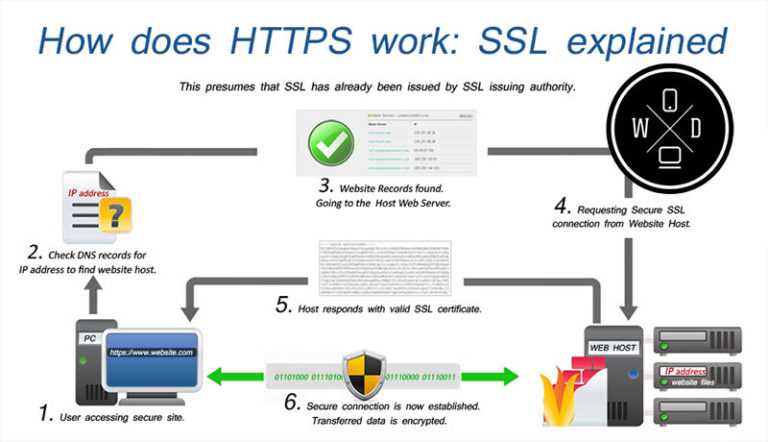Discovering the Birthdate of a Website
Understanding when a website was created is crucial in today’s digital age. Knowing a website’s birthdate can provide valuable insights into its history, credibility, and trustworthiness. This information can be particularly useful for individuals and businesses looking to establish partnerships, make informed purchasing decisions, or assess the reliability of online sources. By learning how to check when a website is created, users can make more informed decisions and navigate the online world with confidence.
In an era where online presence is paramount, verifying a website’s creation date can help identify potential red flags, such as newly launched websites with questionable intentions. Moreover, understanding a website’s age can provide context for its content, helping users distinguish between outdated information and timely, relevant data. As the online landscape continues to evolve, the ability to verify a website’s creation date has become an essential skill for anyone looking to make the most of their online experience.
Fortunately, checking a website’s creation date is a relatively straightforward process that can be accomplished using a variety of methods. By leveraging online tools, analyzing website design and content, and utilizing search engines, users can uncover the birthdate of a website and gain a deeper understanding of its history and credibility. In the following sections, we will explore these methods in greater detail, providing readers with a comprehensive guide on how to check when a website is created.
Using Online Tools to Uncover a Website’s Creation Date
Fortunately, there are several online tools available that can help determine a website’s creation date. One of the most popular tools is Whois.net, which provides information about a website’s domain registration, including the creation date. To use Whois.net, simply enter the website’s domain name in the search bar, and the tool will display the relevant information.
Another useful tool is DomainTools, which offers a range of features, including domain registration information, DNS records, and website analytics. By using DomainTools, users can gain valuable insights into a website’s history and credibility. For example, the tool can reveal when a website’s domain was first registered, which can indicate the website’s creation date.
Archive.org is another online tool that can help determine a website’s creation date. This tool archives websites over time, allowing users to view previous versions of a website. By browsing through the archived versions, users can estimate when a website was created and how it has evolved over time.
In addition to these tools, there are several other online resources available that can help determine a website’s creation date. For instance, users can check the website’s domain registration information using tools like GoDaddy or Namecheap. These tools can provide information about the website’s domain registration, including the creation date.
By using these online tools, users can quickly and easily determine a website’s creation date, which can provide valuable insights into its history and credibility. Whether you’re looking to establish a partnership, make a purchase, or simply want to know more about a website, these tools can help you make an informed decision.
Checking the Website’s Footer and About Page
Another way to determine a website’s creation date is to check its footer and About page. Many websites include copyright information or a “founded in” statement in their footer, which can indicate the website’s creation date. For example, a website’s footer might read “Copyright 2020-2022” or “Established in 2015”. This information can provide a rough estimate of when the website was created.
The About page can also be a valuable resource for determining a website’s creation date. Many websites include a brief history or overview of their company or organization on their About page, which can include information about when the website was launched. Additionally, some websites may include a timeline or milestones section that can provide insight into the website’s creation date.
When checking the website’s footer and About page, look for specific dates or timeframes that can indicate when the website was created. Keep in mind that this method may not always be accurate, as websites can be redesigned or updated over time, and the footer and About page may not always reflect the website’s original creation date.
However, by combining this method with other techniques, such as using online tools or analyzing the website’s design and content, you can gain a more comprehensive understanding of a website’s creation date. By taking the time to investigate a website’s history and credibility, you can make more informed decisions and navigate the online world with confidence.
Analyzing the Website’s Design and Content
Another way to estimate a website’s age is to analyze its design and content. By looking for outdated design elements, old news articles, or archived content, you can make an educated guess about when the website was created. For example, if a website’s design looks like it was created in the early 2000s, it’s likely that the website was launched during that time period.
When analyzing a website’s design, look for elements such as outdated fonts, old-fashioned graphics, or a layout that is no longer commonly used. These elements can indicate that the website has not been updated in a while, which can suggest that it is an older website.
In addition to design elements, you can also analyze a website’s content to estimate its age. Look for old news articles, archived blog posts, or other types of content that may indicate when the website was created. For example, if a website has a news article from 2010, it’s likely that the website was launched before or around that time.
Another way to analyze a website’s content is to look for outdated information or references to old events. For example, if a website mentions a event that occurred in 2005, it’s likely that the website was created after that time.
By analyzing a website’s design and content, you can gain a better understanding of its age and history. This information can be useful in a variety of contexts, such as when evaluating the credibility of a website or when trying to determine the website’s creation date.
Using Search Engines to Find Old Versions of a Website
Search engines like Google can be a valuable resource for finding old versions of a website. By using the “site:” operator, you can search for a specific website and find archived versions of its pages. For example, typing “site:example.com” into Google will return a list of pages from the example.com website that have been indexed by Google.
Another way to find old versions of a website using search engines is to search for cached pages. Cached pages are snapshots of a website that have been saved by search engines like Google. By searching for cached pages, you can find older versions of a website that may no longer be available.
To search for cached pages, simply type “cache:example.com” into Google, replacing “example.com” with the URL of the website you’re interested in. This will return a list of cached pages from the website, which can give you an idea of how the website has changed over time.
Search engines can also be used to find old news articles or press releases that may mention a website’s creation date. By searching for keywords related to the website, you can find news articles or press releases that may provide information about the website’s creation date.
Additionally, search engines can be used to find online archives of websites, such as the Internet Archive’s Wayback Machine. The Wayback Machine is a digital archive of the internet that stores snapshots of websites over time. By searching for a website on the Wayback Machine, you can find older versions of the website and see how it has changed over time.
Checking Social Media Profiles and Online Directories
Social media profiles and online directories can be a valuable resource for finding information about a website’s creation date. Many websites have social media profiles on platforms like Facebook, Twitter, and LinkedIn, which can provide clues about the website’s creation date.
For example, a website’s Facebook page may have a “founded” date listed, which can indicate when the website was created. Similarly, a website’s LinkedIn page may have a “founded” date listed, as well as information about the company’s history and milestones.
Online directories like Crunchbase and AngelList can also provide information about a website’s creation date. These directories often list information about startups and companies, including their founding date, funding history, and other relevant details.
Additionally, online directories like ZoomInfo and Datanyze can provide information about a website’s creation date, as well as other details about the company, such as its revenue, employee count, and technology stack.
When checking social media profiles and online directories, look for specific dates or timeframes that can indicate when the website was created. Keep in mind that this method may not always be accurate, as social media profiles and online directories may not always reflect the website’s original creation date.
However, by combining this method with other techniques, such as using online tools or analyzing the website’s design and content, you can gain a more comprehensive understanding of a website’s creation date.
Verifying the Website’s SSL Certificate
Verifying a website’s SSL certificate can provide valuable information about its creation date. An SSL (Secure Sockets Layer) certificate is a digital certificate that establishes a secure connection between a website and its visitors. When a website is created, it typically obtains an SSL certificate to ensure a secure browsing experience. By verifying the SSL certificate, it is possible to determine when it was issued, which can indicate the website’s creation date.
To verify a website’s SSL certificate, follow these steps:
1. Open a web browser and navigate to the website in question.
2. Click on the padlock icon in the address bar to view the website’s SSL certificate information.
3. Click on the “Certificate” or “SSL Certificate” option to view the certificate details.
4. Look for the “Valid from” or “Issued on” date, which indicates when the SSL certificate was issued.
This date can provide a clue about when the website was created, as it is likely that the website obtained the SSL certificate around the same time it was launched. However, it is essential to note that the SSL certificate issuance date may not always match the website’s creation date, as the certificate may have been renewed or updated over time.
In addition to verifying the SSL certificate, it is also possible to use online tools to check the website’s SSL certificate information. For example, SSL Checker tools can provide detailed information about a website’s SSL certificate, including the issuance date.
By combining the information obtained from verifying the SSL certificate with other methods, such as checking the website’s footer and About page, analyzing its design and content, and using online tools, it is possible to estimate the website’s creation date with a high degree of accuracy.
Remember, verifying a website’s SSL certificate is just one of the many methods that can be used to determine its creation date. By using a combination of these methods, it is possible to uncover the secrets of a website’s past and gain a better understanding of its history and credibility.
Putting it All Together: A Step-by-Step Guide
Now that we have explored the various methods for checking a website’s creation date, let’s put it all together in a step-by-step guide. By following these steps, you can use the methods described in this article to determine when a website was created.
Step 1: Check the Website’s Footer and About Page
Start by checking the website’s footer and About page for clues about its creation date. Look for copyright information or a “founded in” statement that can give you an idea of when the website was launched.
Step 2: Use Online Tools to Check the Website’s Creation Date
Next, use online tools such as Whois.net, DomainTools, and Archive.org to check the website’s creation date. These tools can provide you with information about the website’s domain registration, DNS records, and archived versions.
Step 3: Analyze the Website’s Design and Content
Analyze the website’s design and content to estimate its age. Look for outdated design elements, old news articles, or archived content that can give you an idea of when the website was created.
Step 4: Use Search Engines to Find Old Versions of the Website
Use search engines like Google to find old versions of the website. Use the “site:” operator and search for cached pages to see how the website has changed over time.
Step 5: Check Social Media Profiles and Online Directories
Check the website’s social media profiles and online directories, such as Crunchbase or LinkedIn, to find information about its creation date.
Step 6: Verify the Website’s SSL Certificate
Verify the website’s SSL certificate to determine when it was issued, which can indicate the website’s creation date.
Step 7: Combine the Information
Combine the information you have gathered from the previous steps to estimate the website’s creation date. Use the most reliable information to make an informed decision.
By following these steps, you can use the methods described in this article to check when a website is created and gain a better understanding of its history and credibility. Remember to always verify the information you gather and use multiple sources to ensure accuracy.







